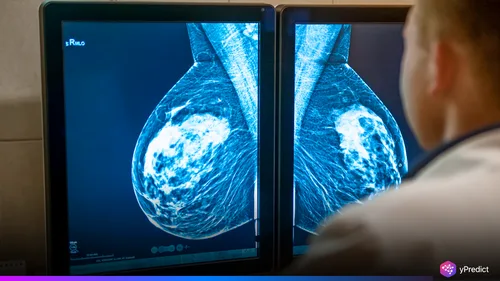
The decisive factor in breast cancer detection is finding cancer early and accurately. Mammography has been the standard screening process, yet radiologists are overwhelmed and difficult to interpret and use the AI models that do perform well are not reliable. Finding the best of both human and machine has always been the challenge.
A group of researchers in the Netherlands at Radboud University Medical Center propose a new way forward. Their work, published in Radiology demonstrates that human judgement combined with AI support produces what they refer to as “human-AI hybrid” and accomplishes “efficiency” with “consistency”. Most importantly, it successfully reduces the radiologist workload by 38% while maintaining diagnostic accuracy. The results usher in a new era of breast cancer screening which binds faith in technology with the comfort of human accountability.
This development answers one of the most pertinent questions in medical imaging today. Can AI successfully carry out a part of the diagnostic process without increasing risk to patients? The results suggest that when you have humans and AI, the answer is, yes.
Why Mammography Needs a Smarter Approach
Mammography is invaluable in diagnosing breast cancer in its earliest stages. That said, reading these scans is a labor-intensive process that requires extreme mental diligence on the part of the radiologist. Each image needs to be carefully examined to ensure a negative result is not misleading, however, increasing case workloads means a radiologist is more likely to err. As there is an increasing demand for screening mammograms, radiologists are faced with time constraints that produce downward pressure on their efficiency.
On the other hand, AI systems promise speed and consistency. Yet many AI mammography models show variability across different datasets and patient populations. This limits their reliability as standalone tools. Patients cannot afford missed diagnoses, making it crucial to find a balance between speed and accuracy. That is where hybrid AI mammography comes in as a practical middle ground.
The Dutch Study: A Step Toward Smarter Screening
Researchers at Radboudumc tested how AI could support radiologists instead of replacing them. The idea was simple but powerful. Let AI handle the straightforward cases while radiologists focus on the more complex or ambiguous scans. By doing so, radiologists save time and energy for cases that require human expertise.
The study revealed striking results. Using hybrid AI mammography, radiologist workload dropped by 38 percent. Yet the system maintained strong diagnostic accuracy across all cases. The hybrid model demonstrated that efficiency and quality do not have to compete but can complement each other.
How the Hybrid Model Works
The workflow starts with the AI model examining mammography images. If the AI model has a high confidence level of being negative, the radiologist is not required to analyze the image. Once uncertainty emerges or if the results provide some suggestion of abnormalities, the image will be flagged for human interpretation, and that will direct the user’s attention to the image. This tiered approach minimizes the chance of missing high-risk clinical cases, while concurrently mitigating the cost of using a radiologist to interpret a lower risk case.
Overall, this is a better model for patient and provider. The patient will receive a diagnosis in a more appropriate timeframe with higher accuracy, and the radiologist will spend less time interpreting images with low risk. Systematically, this approach has the potential to enhance the efficiency of breast cancer screening programs overall.
Reducing Radiologist Workload Without Losing Trust
The strength of this model is its ability to alleviate radiologist workload. Reducing workload by approximately 40 percent is meaningful. It allows radiologists to focus on difficult cases that truly require expertise, while at the same time, the role of AI in routine evaluations prevents the risk of eliminating their diagnostic accuracy, smoothing any of the questions around whether patient care will be standard protocol.
More significantly, this plan deals with skepticism about applying AI in the medical decision-making process. It shifts AI from a replacement for radiologists to an adjunct/partner of physician in radiology. This shift creates trust in the technology while maintaining trust with both professionals and patients.
The Future of Hybrid AI in Medical Imaging
Hybrid AI mammography is a form of mammographic breast cancer detection, but it also emphasizes collaboration between AI and humans, not just in mammography, but also in other imaging modalities like CT and MR, where radiologists are overtaxed too.
In the process of addressing improving these models to analyze even more complex cases, we must ensure that we still demonstrate some fidelity to maintaining diagnostic accuracy moving forward, and that requires going beyond mere diagnostics and considering all of the regulatory standards, patient buy-in, and educational training to the entirety of healthcare personnel that time and financial resources go into observing/monitoring care of a patient.
All things considered, the return on investment for the patient is enormous! AI-enhanced, intelligent screening and interpreting can ultimately deliver enough efficiency into healthcare to give patients accurate diagnoses on time!
Final Thoughts
In the hybrid AI mammography model developed by researchers at Radboudumc shows that combining human expertise with artificial intelligence can improve breast cancer screening because it provides a 38 percent reduction in radiologist workload without compromising diagnostic accuracy. This balance of efficiency and trust is an encouraging indicator of the direction medical imaging should be taking.”






